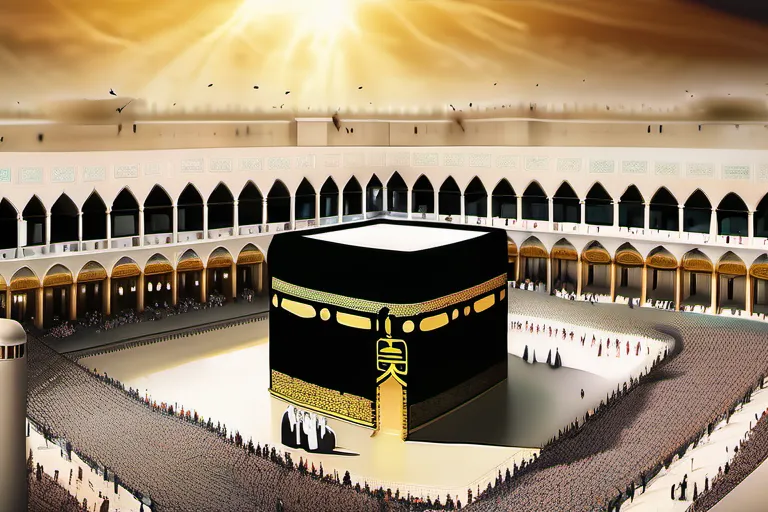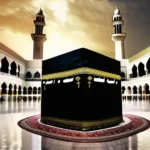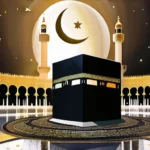Explore the spiritual journey, rituals, and importance of Hajj for Muslims worldwide.
The Hajj is a sacred pilgrimage that every able-bodied Muslim must undertake at least once in their lifetime. This article delves into the history, significance, and rituals associated with this spiritual journey.
The Historical Significance of Hajj
The origins of Hajj, one of the five pillars of Islam, are deeply rooted in history and legend. Imagine a journey that has been undertaken by millions for centuries, each step carrying the weight of ancient stories and profound spiritual significance. Could it be that this pilgrimage, which began with a call from Allah to Prophet Abraham, is more than just a religious obligation? Could it be that Hajj is a timeless testament to human devotion and unity?
The story of Prophet Abraham and his son Ishmael forms the backbone of this ritual. Is it not fascinating how two simple figures from history have inspired such a monumental act of faith for Muslims worldwide? Imagine yourself walking in the footsteps of these prophets, tracing the same path they once walked. Could you feel their determination and faith seeping into your soul?
Hajj has played an integral role in Islamic history, serving as a unifying force that brings people from diverse backgrounds together under the banner of Islam. It is not merely about worshipping at a holy site; it is about understanding the core values of compassion, humility, and submission to Allah’s will. How can one truly grasp the essence of these values without experiencing them in their purest form?
The significance of Hajj extends beyond its historical context. It symbolizes the unity of the Muslim community (Ummah) and underscores the belief that all Muslims, regardless of social status or geographical location, are equal before Allah. Is it not awe-inspiring to see thousands of pilgrims from different parts of the world standing shoulder to shoulder in the vast plains of Mina?
Moreover, Hajj is a reminder of the transient nature of life and the importance of seeking forgiveness and righteousness. The rituals performed during this pilgrimage are a reflection of human struggle against sin and a quest for spiritual purification. How can one approach these rituals without feeling both humbled and inspired?
In essence, the historical significance of Hajj lies in its ability to connect Muslims with their faith, history, and each other. It is a journey that transcends time and space, offering a unique opportunity for spiritual renewal and communal bonding. Could there be any greater experience than embarking on this pilgrimage?
The rituals of Hajj, such as Tawaf, Sa’yee, and standing at Arafat, are not just symbolic acts but profound expressions of submission and devotion. They encapsulate the essence of what it means to follow the path laid out by the prophets. How can one truly appreciate the depth of these rituals without participating in them?
Hajj, therefore, is not just a pilgrimage; it is a living testament to faith and its enduring power to shape human lives. It is a journey that every Muslim should undertake at least once in their lifetime, if possible, to experience the true essence of Islam’s highest ritual.
The Rituals of Hajj
The Rituals of Hajj: Delve into the various rituals performed during the Hajj, such as Tawaf, Sa’yee, and Arafat.
Imagine standing in the Haram Mosque, a vast expanse of white domes and minarets under the clear blue sky. As you take your first step, every grain beneath your feet tells a story of millions who have walked this path before you. This is Tawaf, a ritual that encapsulates the essence of unity and submission in Islam.
As you make your way through the Tawaf, consider the symbolic journey it represents. Like circling around a beloved one, you circumambulate the Kaaba seven times. Why seven? Is it simply a number chosen for its spiritual significance or does it hold a deeper meaning that resonates with the creation of the world itself?
After completing your Tawaf, you find yourself at the Masjid al-Safa and Masjid al-Marwah. Here, you embark on the ritual of Sa’yee. It’s as if each step echoes the footsteps of Hagar, seeking water for her son Ishmael in the scorching desert. This act is not just a physical journey but a spiritual quest for sustenance and strength.
But the most profound experience comes as you stand on Arafat, that vast plain where Muslims gather to seek forgiveness from Allah. As the sun climbs high, casting long shadows across the landscape, you feel the weight of humanity’s collective soul hanging in the balance. Is this moment a mere physical gathering or does it hold the power to transform lives and destinies?
At Arafat, you are reminded that every step, every prayer, is part of a grander narrative. It’s like being in the eye of a storm, where the world outside seems chaotic, but inside, there is only clarity and peace. This experience, this ritual, becomes a bridge between the mundane and the sacred, making each pilgrim feel connected to their faith and to one another.
Preparation for Hajj
Imagine setting out on a journey that has been a dream for years, a pilgrimage that is not just about physical travel but a spiritual transformation. The preparation for Hajj is like packing a suitcase; every item you choose carries significance and purpose. What are the physical preparations that Muslims undertake before they step foot in Makkah? These aren’t merely routine tasks but steps on the path to purification and devotion.
Firstly, the Ihram garments, a symbol of equality and humility, are donned. This act signifies leaving behind all personal differences and entering into a state of worship. By wearing these simple clothes, pilgrims transform themselves from their mundane lives into beings dedicated to prayer and reflection. Could there be a more profound way to cleanse one’s soul?
The cleanliness of the body is also emphasized; Muslims are encouraged to take a ceremonial bath or Ghusl. This ritual washes away not just the physical dirt but also metaphorically purifies the heart, preparing it for a spiritual rebirth. Isn’t this act akin to starting anew with a clean slate?
Next comes spiritual preparation. Pilgrims engage in intense prayer and recitation of the Quran to strengthen their faith and connect with Allah. It’s like lighting a fire within, ensuring it burns bright during the journey ahead. What better way is there to prepare your heart for the trials that lie ahead than by immersing yourself in spiritual texts?
Lastly, financial readiness is crucial. The journey to Hajj requires careful planning and sufficient funds. This step, often overlooked but equally important, ensures that nothing stands between the pilgrim and their sacred duty. How can one fully embark on this profound journey if they are burdened by financial stress?
In preparing for Hajj, Muslims undergo a multifaceted process of cleansing and preparation. Each aspect—from the clothing to the prayers—plays a vital role in setting the stage for the spiritual transformation that awaits them at Absolutely any question that arises, from the physical act of walking around the Kaaba to the moments spent reflecting on one’s life, is steeped in meaning. Are you ready to embark on this journey of faith and devotion?
The Spiritual Impact of Hajj
Imagine walking through the vast, open space of the Masjid al-Haram in Makkah, feeling the weight of history and spirituality under your feet. Every step you take is a journey back in time, connecting you to millions of pilgrims who have walked these same grounds before you. Hajj is more than just a religious obligation; it’s a profound spiritual experience that transforms hearts and minds.
For many Muslims, the pilgrimage isn’t just about fulfilling a duty—it’s an opportunity for deep personal reflection and growth. It’s like shedding layers of a coat you never knew was there, revealing your true self beneath. The rituals of Hajj serve as powerful metaphors for our spiritual journey: standing in Arafat under the vast sky, seeking forgiveness and mercy from Allah; circling the Kaaba seven times, symbolizing unity with the divine.
The emotional and psychological impact of Hajj can be overwhelmingly intense. Imagine being part of a sea of people, all moving as one, in Tawaf. Each step you take is synchronized with millions of others, creating an almost spiritual connection that transcends individuality. It’s a moment where the barriers between you and your fellow Muslims seem to dissolve, leaving only the shared desire for closeness to God.
Then there are the psychological transformations. The Hajj experience can be life-changing, offering a chance to confront one’s own weaknesses and seek purification of the soul. It’s like embarking on a journey through a mirror, seeing yourself as you truly are—flawed but capable of transformation. This pilgrimage challenges us to let go of our fears and embrace vulnerability, standing together in humility before the face of Allah.
As you leave Mina, it’s not just the physical act of walking back into civilization that marks your journey; it’s the spiritual insights and personal growth that remain with you. Hajj is more than a ritual; it’s a profound experience of the divine, a reminder of our shared humanity and our eternal connection to the infinite.
Hajj and Islamic Teachings
Imagine embarking on a journey where every step, every ritual, and every moment resonates deeply within your heart and soul. That journey is Hajj, the pilgrimage to Masjid al-Haram in Mecca that Muslims undertake with unwavering faith. How does one prepare for such an intense spiritual odyssey? It’s a quest to cleanse oneself of sins, seek forgiveness, and reaffirm one’s commitment to Islam’s core teachings. As you stand among millions of fellow pilgrims, each one performing the same rituals, can you really feel the unity in diversity that defines this pilgrimage?
The teachings of Islam are not just recited from a page; they are embodied and reinforced through every act during Hajj. Wearing Ihram, the simple white garment symbolizing equality before Allah, is like donning a uniform that strips away worldly distinctions. How can you feel anything but humbled as you walk around Arafat, where thousands of voices merge into a cacophony of prayer and repentance? The symbolic stoning of Jamarat represents the rejection of evil, echoing the teachings to fight injustice in one’s life. Every act, from Tawaf (circling the Kaaba) to drinking Zamzam water, is steeped in significance and purpose.
Hajj becomes a living testament to the essence of Islam—submission to Allah’s will and the unity of believers. It’s not just about physical movement; it’s an internal transformation, a profound reminder of one’s place in the grand tapestry of humanity. As you immerse yourself in this spiritual journey, can you truly understand how these rituals reinforce your faith and deepen your connection with the divine?
The Unity and Brotherhood of Hajj
The Unity and Brotherhood of Hajj: Explore the sense of unity, brotherhood, and shared humanity experienced by pilgrims during Hajj.
Imagine a vast sea of people, all wearing simple white garments that make them look like grains of sand on a desert beach. This is not just a scene; it’s an incredible manifestation of unity in action, where differences fade away and only one purpose remains: to fulfill the fifth pillar of Islam, Hajj.
During this spiritual journey, pilgrims from diverse backgrounds, cultures, and beliefs come together under the same sky. They walk the same paths, perform the same rituals, and stand shoulder to shoulder in prayer. This is not just a physical gathering; it’s a metaphor for the oneness of humanity. Are we not all brothers and sisters in faith, sharing this quest for spiritual cleansing?
The act of walking around the Kaaba seven times symbolizes the unity of Muslims from different corners of the globe. It’s as if every step taken is a step towards brotherhood, breaking down barriers of race and nationality. Isn’t it remarkable how this pilgrimage, despite its grand scale, retains such a personal and intimate essence?
The shared experience of performing Tawaf (circling the Kaaba), Sa’i between Al-Safa and Marwah, and standing in Arafat is more than just ritualistic movements. It’s a profound reminder that we are all pilgrims on this journey of life, seeking the same purposes. Why do we not see ourselves as fellow travelers, united by our quest for truth and peace?
Hajj offers an unparalleled opportunity to experience the true essence of Islam’s teachings. It’s a living testament to the idea that in the eyes of Allah, all believers are equal. As pilgrims from different lands gather together, they form a tapestry of human diversity, woven into one seamless fabric through their common faith and purposes.
So, next time you hear about Hajj, don’t just see it as a religious duty; embrace it as an invitation to join the ranks of those who seek unity in the most profound sense. Could there be a more powerful symbol of our shared humanity than the millions of souls coming together for this sacred pilgrimage?
Conclusion
 By understanding the Hajj, we gain insights into the deep faith and devotion of Muslims worldwide. It serves as a reminder of unity, humility, and the pursuit of righteousness.
By understanding the Hajj, we gain insights into the deep faith and devotion of Muslims worldwide. It serves as a reminder of unity, humility, and the pursuit of righteousness.











